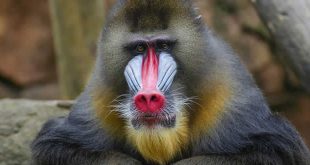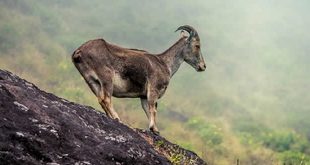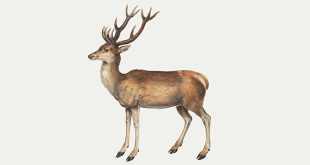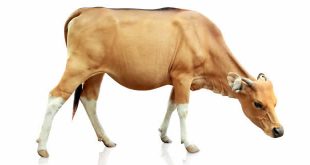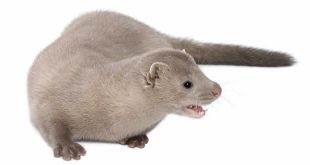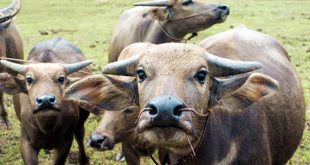 Walrus — The walrus (Odobenus rosmarus) is a large flippered marine mammal with a discontinuous circumpolar distribution in the Arctic Ocean and sub-Arctic seas of the Northern Hemisphere. The walrus is the only living species in the Odobenidae family and is further subdivided into two or three subspecies; the Atlantic walrus (O. rosmarus rosmarus), the Pacific walrus (O. rosmarus divergens) and a possible third sub-species in the Laptev Sea (O. rosmarus laptevi).
Walrus — The walrus (Odobenus rosmarus) is a large flippered marine mammal with a discontinuous circumpolar distribution in the Arctic Ocean and sub-Arctic seas of the Northern Hemisphere. The walrus is the only living species in the Odobenidae family and is further subdivided into two or three subspecies; the Atlantic walrus (O. rosmarus rosmarus), the Pacific walrus (O. rosmarus divergens) and a possible third sub-species in the Laptev Sea (O. rosmarus laptevi).
Walruses are immediately recognizable due to their prominent tusks, whiskers and great bulk. Adult Pacific males can weigh up to 4,500 lbs, and, among pinnipeds, are exceeded in size only by the elephant seals. They reside primarily in shallow oceanic shelf habitat, spending a significant proportion of their lives on sea ice in pursuit of their preferred diet of benthic bivalve mollusks. They are relatively long-lived, social animals and are considered a keystone species in Arctic marine ecosystems.
Walruses have played a prominent role in the cultures of many indigenous Arctic peoples, who have hunted walruses for their meat, fat, skin, tusks and bone. In the 19th and early 20th centuries, walruses were the objects of heavy commercial exploitation for blubber and ivory and their numbers declined rapidly. Their global population has since rebounded, though the Atlantic and Laptev sub-population remain fragmented and at historically depressed levels.
While isolated Pacific males can weigh as much as 2,000 kg (4400 lbs), most weigh between 800 and 1,800 kg (1760 and 4000 lb). Females weigh about two thirds as much as males, and Atlantic walruses are about 90% as massive as Pacific walruses. Atlantic walruses also tend to have relatively shorter tusks and somewhat more flattened snouts. The body shape of the walrus is in several ways intermediate between that of eared seals (otariidae) and true seals (phocidae). As with otariids, they have prominent thick necks and the ability to turn their rear flippers forward and move on all fours; however, their swimming technique is more similar to that of true seals, relying less on flippers and more on sinuous whole body movements. Like phocids, they also lack external ears.
The most prominent physical feature of the walrus is their long tusks, actually elongated canines, which are present in both sexes and can reach a length of 1 meter and 5.4 kg (12 lbs). These are slightly longer and thicker among males, who use them for fighting, dominance and display; the strongest males with the largest tusks typically dominating social groups. Tusks are also used to form and maintain holes in the ice and haul out onto ice.
Walruses prefer shallow shelf regions and forage on the sea bottom. Their dives are not particularly deep compared to other pinnipeds (see elephant seals for example); the deepest recorded dives are around 80 m (300 ft). However, they can remain submerged for as long as a half hour.
 Kids Portal For Parents India Kids Network
Kids Portal For Parents India Kids Network
